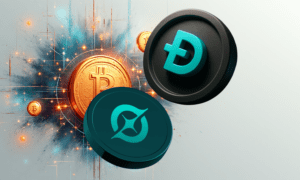Introduction
In the dynamic realm of blockchain technology, scalability has emerged as a critical concern. As the demand for decentralized applications (dApps) surges, the strain on blockchain networks becomes palpable. In response, various Layer 2 scaling solutions have been developed to alleviate congestion and enhance transaction throughput. Among these, Polygon (formerly Matic Network) stands out as a formidable contender. This article will delve into a comparative analysis of Polygon MATIC and other Layer 2 solutions, exploring their features, benefits, and limitations.
Understanding Layer 2 Scaling Solutions
Layer 2 scaling solutions are protocols designed to enhance the performance of blockchain networks by processing transactions off-chain. By doing so, they alleviate the burden on the underlying blockchain, thereby increasing throughput and reducing fees. These solutions typically operate parallel to the main blockchain, offering a faster and more efficient alternative for executing transactions.
Exploring Polygon MATIC
Polygon, formerly known as Matic Network, has gained widespread acclaim for its robust Layer 2 scaling solution. Built on the Ethereum blockchain, Polygon aims to address Ethereum’s scalability issues by providing a framework for building and connecting Ethereum-compatible blockchain networks. Through its innovative technology, Polygon enables seamless interoperability between multiple chains, thereby enhancing scalability and usability.
Advantages of Polygon MATIC
Scalability:
Polygon significantly enhances Ethereum’s scalability by processing transactions off-chain, leading to faster confirmation times and lower fees.
Interoperability:
One of Polygon’s key strengths lies in its ability to seamlessly connect with various blockchain networks, facilitating interoperability and enabling cross-chain transactions.
Security:
Despite operating off-chain, Polygon maintains a high level of security through its adherence to Ethereum’s robust consensus mechanism.
Developer-Friendly:
Polygon offers a developer-friendly environment with support for Ethereum-compatible smart contracts and developer tools, making it easier for developers to build and deploy dApps.
Community Support:
With a vibrant and active community, Polygon has garnered strong support from developers, users, and investors alike, driving adoption and innovation within the ecosystem.
Comparative Analysis:
Polygon MATIC vs. Other Layer 2 Solutions
Optimistic Rollups
Optimistic Rollups are another Layer 2 scaling solution that seeks to enhance blockchain scalability by processing transactions off-chain. Unlike Polygon, Optimistic Rollups rely on optimistic execution, wherein transactions are initially processed off-chain and later validated on the main blockchain. While Optimistic Rollups offer scalability benefits, they may face challenges related to security and transaction finality.
zk-Rollups
Zero-Knowledge (zk) Rollups employ advanced cryptographic techniques to achieve scalability and privacy on the blockchain. By aggregating transactions into succinct proofs, zk-Rollups enable efficient processing of transactions while preserving data privacy. However, zk-Rollups may present higher implementation complexity compared to Polygon MATIC, and their adoption may be hindered by regulatory concerns surrounding privacy-enhancing technologies.
Sidechains
Sidechains are independent blockchain networks that operate in parallel to the main blockchain. They offer scalability by processing transactions off-chain and periodically anchoring data to the main blockchain for security. While sidechains provide scalability benefits similar to Polygon MATIC, they may suffer from interoperability issues and centralization risks associated with maintaining separate consensus mechanisms.
Conclusion
In conclusion, Polygon MATIC represents a compelling solution to Ethereum’s scalability challenges, offering scalability, interoperability, and security benefits. While other Layer 2 solutions such as Optimistic Rollups, zk-Rollups, and sidechains provide alternative approaches to scalability, Polygon’s robust framework and vibrant ecosystem position it as a frontrunner in the race for blockchain scalability. As the demand for decentralized applications continues to grow, solutions like Polygon MATIC will play a pivotal role in shaping the future of blockchain technology.



































